How to Buy Personal Flotation Devices

Personal flotation devices can save lives, making them a necessary accessory to have while on the water, regardless of the activity. But it’s not only a good idea to have them on board, it’s also required by law. So, to keep you and your loved ones safe and to avoid being fined by the U.S. Coast Guard, follow these tips on how to buy the best personal flotation device.
Table of Contents
Our Top Four PFD Recommendations
Kokatat Leviathan Fishing PFD
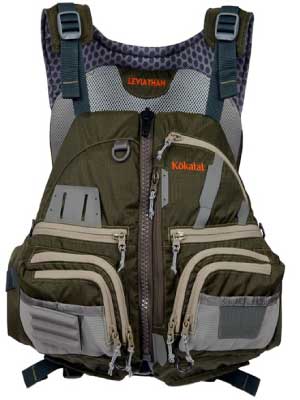
The Kokatat Leviathan Fishing PFD is a great vest for anglers. With 14 pockets and multiple accessory loops, you’ll have no problem bringing what you want, wherever you want. This PFD is made from PVC-free, body-mapped Gaia foam that forms to your body to provide a comfortable and secure fit. The back and shoulders are made from ultra-light, quick-drying Ariaprene mesh that fits comfortably in high-back seats. It is a USCG Type III personal flotation device.
Stohlquist Edge Recreational PFD
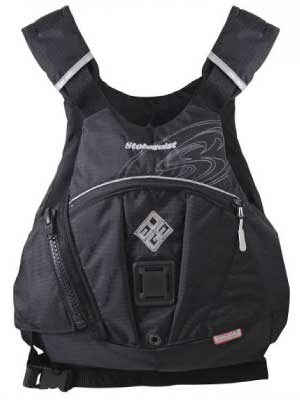
The Stohlquist Edge is a USCG Type III, recreational personal flotation device. It’s great for low profile boating, such as whitewater rafting, stand up paddle boarding, and kayaking. This PFD is not only comfortable, but it’s also environmentally friendly. The torso is made from ergonomic WRAPTURE™ materials and a mini-ripstop shell with nylon lining. It’s equipped with adjustable shoulder straps, four side pulls, and a front waist buckle closure. We highly recommend the Stohlquist Edge for those relaxing, fun days on the water.
Stohlquist Cruiser Recreational PFD – Women
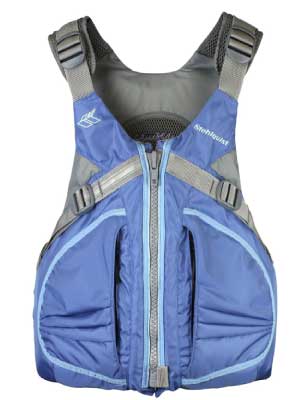
The Stohlquist Cruiser Recreational PFD is a USCG Type III personal flotation device. It’s designed for recreation. This life vest is made from GAIA PVC-free foam with an inner nylon lining. It features a smaller cut, shortened torso, supportive inner cups, and the WRAPTURE shaped torso. Despite the Stohlquist Cruiser Recreational PFD being simple and to-the-point, you’re not going to be compromising any buoyancy, as it provides 16 pounds of extra flotation.
Astral GreenJacket LE10 River Roots Pullover Life Jacket
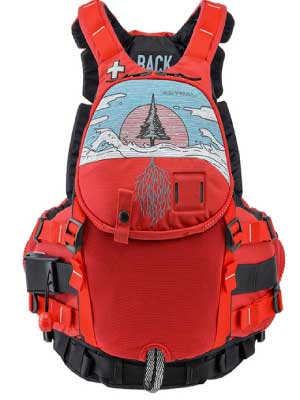
The Astral GreenJacket is one of the world’s best personal flotation devices. It is a USCG Type V PFD designed for whitewater activities. It’s made with foam tectonics technology that allows for the outer panel of the vest to move freely while the inner panel remains securely in place. It also has an ultra-breathable, mesh high back to keep you comfortable and save. This PFD features a large front pocket, an interior storage sleeve, and a reflective trim.
Personal Floatation Device (PFD) Buyer’s Guide
Why You Need to Have A PFD
Personal flotation devices save lives.
Boating accidents are not just something seen in the Titanic— they’re a very real situation. In fact, according to the U.S. Coast Guard’s 2017 Recreational Boating Statistics, where the cause of death was known, 76% of fatal boating accident victims drowned. And of that percentage, 84.5% of the victims were not wearing life vests.
Your swimming abilities change when in an emergency situation.
When people are in the fight-or-flight response, their bodies react differently to dangerous situations. So, while you may be an excellent swimmer, you can never be too sure how your abilities will be when you’re in survival mode.
If you’re still not sold, maybe you will be after reading this statistic. According to the International Life Saving Federation, one-quarter of those who died from drowning were swimmers.
Mother nature is stronger than you are.
Human strength cannot compete with the strength of mother nature. If you’ve fallen out of a boat and got caught in a strong current, there’s a good chance you’ll be carried away. Or if your boat has encountered unexpected large waves and you’ve been thrown overboard, you’ll have a much harder time keeping your head above the water.
Here is a guide on more PFD requirements.
Standard PFDs vs Inflatable PFDs
Standard PFDs and inflatable PFDs both have their pros and cons, but the final decision ultimately depends on the type of water activity you’ll be using it for and your level of comfort.
Standard PFDs
Standard PFDs are the life jackets used most commonly by recreational kayakers, boaters, or paddlers. These PFDs are classified as U.S. Coast Guard Type III.
Pros
- They’re low-maintenance and require very little care. The only care they need is to, when not in use, keep them clean, dry, and out of the sun.
- They’re inherently buoyant. You don’t need to do anything to create flotation.
- They’re versatile. They can be used for all types of boating activities or water sports.
- They have pockets. Unlike inflatable PFDs, most standard PFDs have pockets.
Cons
- They’re bulky. Some find them to be restrictive when paddling.
- They’re hot. If you’re already sweating on a warm summer day, these won’t help you cool down.
Inflatable PFDs
Inflatable PFDs are used most commonly for kayaking, canoeing, and stand up paddle boarding. They are classified by the U.S. Coast Guard as Type III or Type V, depending on the design.
Pros
- They’re much more comfortable. Because they inflate and deflate, these PFDs generally have a slimmer profile in comparison to standard PFDs. This makes it less bulky and provides people a greater range of motion when paddling.
- They’re cool. These PFDs cover less of your body, making them cooler than standard PFDs.
Cons
- They’re not inherently buoyant. Before using them, they need to be inflated to provide any flotation. This can particularly be an issue if you’re injured.
- They need regular maintenance. After each inflation, the CO2 cartridge needs to be replaced for it to function properly.
- They’re not very versatile. These are not suitable for high-impact activities, such as whitewater kayaking or river rafting because they can get damaged more easily.
Types of PFDs

The U.S. Coast Guards divides personal flotation devices into five categories: Type I, Type II, Type III, Type IV, and Type V.
Type I PFD
Type I PFDs are designed for rough, more aggressive waters, in which rescue would be more difficult and take longer. While they are the most buoyant personal flotation devices, they’re also bulky, leading casual boaters to choose other types. These personal flotation devices are most commonly used on commercial vessels.
Type II PFD
Type II PFDs serve the opposite function as Type I PFDs do. They’re designed for calm waters, in which rescue would be quick. These have a very basic design, are less bulky, and are generally less expensive than Type I PFDs.
Type III PFD
Type III PFDs are the most popular choice among kayakers, canoers, and stand up paddle boarders. This is because they’re comfortable and less bulky, offering people a greater range of movement. Type III PFDs are best for calm waters in which rescue would be quick.
Type IV PFD
Type IV personal flotation devices are not designed to be worn; they are meant to be thrown to a conscious person who needs extra flotation support while already wearing a life jacket. These include life rings or buoyant cushions. Canoers, kayakers, and stand up paddle boarders are not required to have one while out on the water.
Type V PFD
Lastly, Type V PFDs are designed for specific activities, such as kayaking, waterskiing, windsurfing, and more. The U.S. Coast Guard requires that these be worn at all times and used only for the activity specified on the label of the particular PFD.
PFDs for Specific Activities
Fishing PFDs
Any type of PFD can be used for fishing, but most anglers prefer Type IIIs or Type Vs because they provide the most comfort and allow for the greatest range of motion. If you’re looking for a fishing PFD, choose one that has pockets and accessory loops. This will make transporting and storing your supplies much more convenient.
Recreational PFDs
If you’re looking to purchase a recreational personal flotation device, choose one that has a low-profile so that your range of motion is not restricted. Consider a waist pack inflatable PFD. They’re a particularly popular choice among stand up paddle boarders because they provide a great deal of comfort.
Whitewater PFDs
Personal flotation devices are especially important for whitewater activities. We don’t recommend choosing an inflatable PFD, as they are less durable in aggressive waters. Look for one with an unrestrictive cut and a low profile so that your freedom of movement is not limited.
Size and Fitting
Personal flotation devices should feel snug on your body and fit like a glove. But be sure that it’s not too tight– your freedom of movement should not be restricted, nor should you chafe while paddling or doing any other activity.
As a general rule for finding the right fit, when trying on a PFD, wear the clothes you’ll be wearing on the water and try different movements to makes sure it’s comfortable and that there is no chafing.
Adults
For adults, choose a size based on your chest size, not your weight. To get your size, measure the circumference of your chest at its widest point.
How to get the right fit:
- For standard PFDs, loosen all of the straps, put on the PFD, and zip it up. For inflatable PFDs, if it’s a vest style, put on over your head. If it’s a waist pack style, clip it on around your waist.
- Once you have it on, begin tightening the straps, starting from the waist and moving up. If your PFD has shoulder straps, tighten those last. The PFD should feel snug but comfortable.
- To check how secure it is, have another person pull up on the shoulders of the PFD. If it moves above your nose, tighten the straps more. If after you’ve tightened the straps and it still moves above your nose, the PFD is too large.
Kids
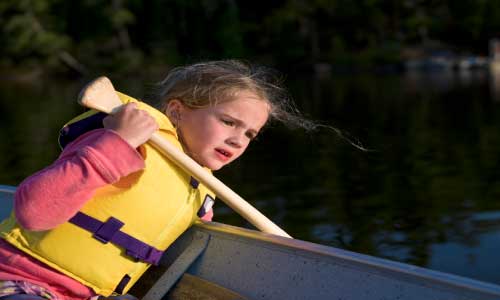
Unlike adult PFDs, in which you determine the proper size based on the person’s chest, the proper size of a child’s PFDs is determined based on the weight. Kids personal flotation devices are sized as either infant, child, or youth.
- Infant PFDs: 8- 30 pounds
- Child PFDs: 30- 50 pounds
- Youth PFDs: 50- 90 pounds.
Children’s personal flotation devices should be equipped with a padded head support, a grab handle, and a crotch strap.
Parents, one thing not to do is purchase one that’s too big for your child because you think they will eventually grow into it. Until they do, the PFD will be useless and will not keep them safe.
Dogs
Your dog is just as much at risk of drowning as you are. So, if you’re planning on bringing them along on your water activity, they too need a life vest. Dog PFDs are not certified by the U.S. Coast Guard but can nevertheless still be a life saver.
To get the proper life jacket for a dog, the PFD must have a snug fit so they can’t squirm out of it. Choose one that has a low-profile, so that it’s less likely of catching a snag, and one that has easy-release buckles. Also, choose one that has a grab handle so that you can lift your dog out of the water.
Features
Pockets
Most standard PFDs have pockets, but not all inflatable PFDs do. When considering the pockets, keep in mind the items you’ll be storing and how your range of motion and comfort level will be affected when the pockets stuffed.
Tabs
Tabs allow you to attach a knife, a strobe, a whistle, or other small accessories. This is particularly important for fishing PFDs. Consider the number of tabs you’ll need and where they’re located on the life jacket.
Ventilation
If you’re sensitive to the heat, consider a PFD that has built-in-vents to allow your body heat to escape.
Color and Reflective Tape
If you’ve fallen overboard, being spotted easily is crucial, especially in rough water conditions. Look for a bright-colored PFD or one that has reflective tape attached to increase visibility.
Specifications
The most important specification of PFDs is their buoyancy, also known as flotation. This is the force required to keep a person’s head above the water and prevent them from drowning. Most adults need around seven to 12 extra pounds of floatation to stay afloat, but most PFDs provide more than that.
To check the buoyancy of a PFD
- Put on the PFD and enter water that’s too deep for you to touch the bottom so that you can float.
- Relax your body and tilt your head back.
- If your mouth and chin stay above the water, the PFD is properly buoyant. If your mouth falls below the water, the PFD does not provide the proper buoyancy.
